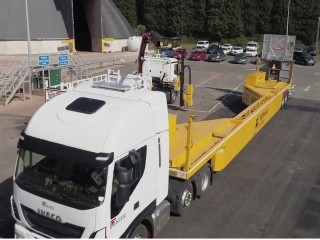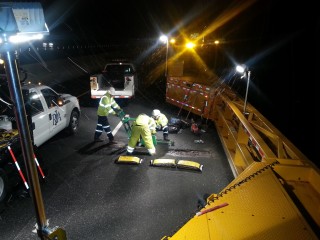The 70ft-long barriers are made by US firm Mobile Barriers LLC in Denver, Colorado. Kier’s first unit, towed by an Iveco tractor unit, has been deployed on motorways in the West Midlands.
The 16-tonne barriers were originally designed for military use to protect against roadside bombs. They are now being used – for the first time in Europe – as replacement for cones as the main protection for workers.
If struck from the side, the barriers absorb the impact from a moving vehicle while a lorry-mounted crash cushion gives further protection at the rear. The mobile barriers act as a physical protection for both road workers and motorists.
As well as improving safety, the roadworks themselves take less time to complete, Highways England says, as deployment is quicker than setting up cones and signs.
Dave Wright, executive director for Kier Highways, commented: “As a company we’re committed to working with our partners to ensure we continuously develop technology that improves safety on the road for both road workers and users. We’re hugely passionate about this, and our improvements team is constantly looking at ways to innovate and pioneer new products that go towards this aim.
“Our main priority is to make sure everyone gets home safely at the end of the day and we look forward to expanding mobile barrier across our other UK contracts.”

Martin Bolt, who heads up innovation projects for Highways England, said: “The mobile barriers, which are being used for the first time in Europe, are an innovative way of looking at how we can increase protection for road workers. And they’re helping customers too, because the faster we can get the work safely done the better people’s journeys will be.”
| Mobile barrier lorry facts | |
|---|---|
| Length: | 22.459 metres |
| Width: | 2.569 metres |
| Body height: | 3.693 metres |
| Body ground clearance: | 337 mm |
| Weight: | 16.2 tonnes, including cushion |
| Tractor unit: | 8.5 tonnes, with two axles and four wheels |
| Top speed: | 56mph |

Got a story? Email news@theconstructionindex.co.uk



